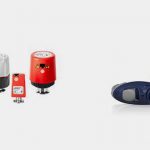If you’re in an industry that involves using conveyor belts to move lots of potentially-hazardous stuff from one place to another, you’ve probably encountered that horrible moment where some piece of debris being dumped onto the belt hits just right and punctures a hole. If you’re unlucky, you’ve seen that debris, still stuck it its own hole, carried all the way to a pulley or crossbar, where it got stuck and proceeded to slice a long gash right down the middle of your conveyor belt.
There has to be something to keep that from happening, right? Of course there is. In fact, there are three common variations:
- Impact Idlers: several sets of three large pulleys that sit below the site of impact. Each set has one pulley angled up on either side, with a third pulley flat and lower in the middle. The earliest attempt to reduce conveyor belt damage.
- Impact Saddle: several sets of U-curved iron bars lined with dense polyurethane squares.
- Elastic Bands: several sets of thick elastic bands with a few polyurethane pads riveted on.
The Problems with Impact Idlers
Impact idlers don’t sit snug with your conveyor belt; their three flat planes mean that significant gaps occur in the corners, where the belt pulls away from the idlers. A sharp piece of something that lands in that gap can still easily puncture the belt.
The Problems with Elastic Bands
Elastic bands do fit snug with the conveyor belt, so puncture points aren’t a problem. However, elastic bands don’t hold the shape of the belt; they adjust to it. That, in turn, means that in order to use elastic bands, you have to position them between two sets of idlers that force the belt into the desired shape, meaning you can’t use them in situations where space is limited. Also, when the bands do require repair or replacement, you have to shut down the entire operation. Both idler pulleys and saddle pads can be replaced on the fly.
The Problems with Impact Saddles
By and large, we believe impact saddles are the best solution for most situations, but they aren’t entirely without their problems. Unlike idlers and elastic bands, an impact saddle has one shape; it’s not adjustable. They’re available in any given shape, but once they’re installed, any on-the-fly changes you make are going to have to take their existing shape into account.























